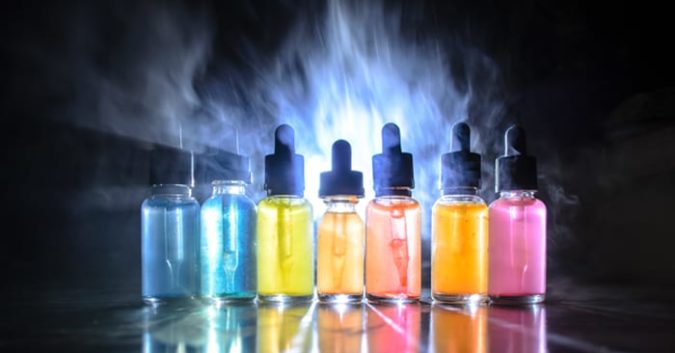Recent findings published by the Stanford Cardiovascular Institute show that e-cigarettes and various e-cigarette flavors may increase the risk of cardiovascular disease.
The study focused on endothelial cells, which form the lining on the interior surface of blood vessels and play a major role in the healthy circulation of blood throughout the body. Researchers wanted to see how these cells held up against the barrage of chemicals and toxins present in e-cigarette vapor.
“Until now, we had no data about how these e-liquids affect human endothelial cells,” said Dr. Joseph Wu, director of the Stanford Cardiovascular Institute and senior author. “This study clearly shows that e-cigarettes are not a safe alternative to traditional cigarettes”
A Battle for the Lungs of the Young
The study is the latest in a series of unsettling findings from labs across the country that are trying to forecast the health hazards of these largely unregulated products. At the same time, e-cigarette manufacturers are buying their own research and spending big on ad campaigns designed to hook new users with an addictive drug.
For the United States, it has become a race between regulators and profiteers to define one of the most significant public health boundaries in recent memory.
In the balance hang American adolescents who, despite age restrictions, have no problem getting a hold of the most potent nicotine delivery systems ever created. If trends continue, the sad reality is that more than 1.5 million more teens will pick up vaping in 2019.
“One in five high school students have tried e-cigarettes, perhaps because they feel they are relatively safe,” said to Dr. Won Hee Lee, one of the study’s lead authors. But as their findings suggest, current experimentation with e-cigarettes should be located in the lab rather than the lungs of young people.
A Range of Damage Depending on Chemical Flavorings
The Stanford researchers studied endothelial cells derived from human-induced pluripotent stem cells (iPS cells). By generating the specific cell type in the lab, scientists were better able to analyze the effects of e-cigarette use on its function.
They introduced the epithelial cells to e-liquids and blood collected from e-cigarette users just after vaping. Exposure to both caused a number of dysfunctional changes in the cells that are known to precede cardiovascular disease. Researchers noted decreased cell viability and increased levels of “molecules implicated in DNA damage and cell death.” They also saw that the cells were, “less able to form new vascular tubes and to migrate and participate in wound healing.”
Depending on the flavor of the e-cigarette, the amount of cell damage fluctuated. Of the 6 popular flavors they studied, the most harmful were cinnamon and menthol. After exposure to those flavors, epithelial cells showed signs of damage even when nicotine was not present.
Similar Nicotine Levels Between Traditional and E-cigarettes
The Stanford team also tested the nicotine levels in the blood of both e-cigarette and traditional cigarette users. After smoking for 10 minutes at a constant rate, they found similar concentrations in both groups.
The result underscores how little is really known about nicotine exposure in e-cigarettes. Depending on the device — which range from discrete but powerful JUUL pods to massive vape tanks — users are exposed to increasingly high concentrations of nicotine. The devices themselves are under-regulated, and the ways people use them are hardly always as directed.
“When you’re smoking a traditional cigarette,” said Wu, “you have a sense of how many cigarettes you’re smoking.” He continued:
“But e-cigarettes can be deceptive. It’s much easier to expose yourself to a much higher level of nicotine over a shorter time period. And now we know that e-cigarettes are likely to have other significantly toxic effects on vascular function as well.
It’s important for e-cigarette users to realize that these chemicals are circulating within their bodies and affecting their vascular health.”
With each passing month, scientists are discovering more significant, long-term risks associated with e-cigarettes. How many will see these studies? How many more will see advertisements that recommend e-cigarettes as a safe alternative to smoking?
The true dangers are barely coming into view now, but people are turning to these devices by the million based on a false promise.
Senator Calls on FDA to Stop JUUL’s ‘Deceptive Marketing Campaign’
Any claim about the long-term benefits of e-cigarettes is completely unsubstantiated. Why? They simply have not been on the market long enough for public health officials to make an informed decision about a product that contains so many known toxins.
In a letter blasting the Food and Drug Administration (FDA) for its continued inaction on e-cigarettes, Illinois Sen. Dick Durbin drew attention to JUUL, the morally bankrupt kingpin of e-cigarette manufacturers and the lie they continue to push.
No e-cigarette is approved as a smoking cessation device, and yet “JUUL’s current marketing campaign urges smokers to ‘Make the switch’ from cigarettes.” In fact, write Durbin:
“JUUL has conducted zero clinical trials in the U.S. proving their products help adults quit smoking cigarettes. They should not be making this claim, and FDA has the authority to stop this deceptive marketing campaign. Use it.”
Durbin also called for immediate regulation of “kid-friendly flavors,” which the greater tobacco industry has been using for decades to hook lifetime users young, while their brains are still forming.
The confusion and outright lies surround e-cigarettes today will have serious public health consequences for years to come. Let’s hope those in charge take the growing list of risks into account going forward.
